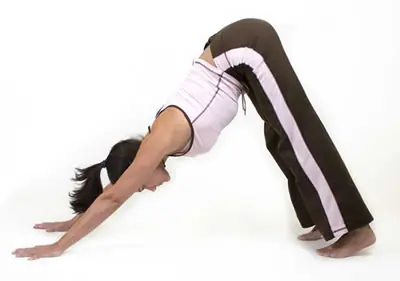After giving birth to your child, some days you may worry about getting up in the morning and facing the world. Hopelessness takes over, and you will also feel empty.
If this reappears often, you are in trouble, my dear buddy, as postpartum depression/ darkness is knocking on your door. The earlier you find a solution, the better. Below you can know everything regarding postpartum. Take a look!!
What Is Postpartum Blues?
For most women, having a baby is a fascinating, joyous, and often anxious time. But for women with postpartum, depression it can become very distressing and difficult. Postpartum depression (PPD) is an emotional health illness that influences women after conceiving.
For some women, it is usual to feel the “postpartum blues” for a few weeks after giving birth. With postpartum anxiety, feelings of sadness, loneliness, worthlessness, restlessness, and anxiety last much longer than a few weeks. It can carry risks for both the mother and child.

What Causes Postpartum Depression?
Postpartum depression is more possible to happen if you have had any of the following:
- Previous postpartum depression.
- Depression not related to pregnancy.
- Severe premenstrual syndrome (PMS).
- A difficult or very stressful marriage or relationship.
- Few family members or friends to talk to or depend on.
- Stressful life events during pregnancy or after childbirth (such as severe illness during pregnancy, premature birth, or a difficult delivery).
How Is Postpartum Depression Treated?

Postpartum depression is treated differently relying on the type and seriousness of a woman’s signs and symptoms. Treatment alternatives include anti-anxiety or antidepressant medications, psychotherapy, and participation in a support group for emotional support and instructions.
In the case of postpartum psychosis, drugs/medications used to treat psychosis are generally added. Hospital admission is also regularly necessary.
If you are breastfeeding, don’t expect that you can’t take medication for depression, anxiety, or even psychosis. Talk to your doctor. Under a specialist’s supervision, many women take medication while breastfeeding. This is a decision to be made amongst you and your doctor.
Recent parents who feel that they are showing PPD signs and symptoms should get in touch with their doctor. Although recovery may sometimes take several months, and in some cases even longer, it is treatable.
postpartum step on the road to treating and recovering from PPD is to recognize the problem. Family, partners, and the support of dear friends can have a major impact on a speedy recovery.
Self-help groups are helpful. Not only do they provide access to useful guidance, but also access to other parents with similar problems, concerns, and symptoms. This may reduce the feeling of isolation.
Foods that Fight Post-Partum Depression
Although feeding yourself well and healthy may be the last thing on your mind, eating fresh food can have a significant impact on both your mood and energy levels. Listed below are some best foods that help fight post-partum depression.
1} Omega-3 fatty acids
2} Serotonin rich foods
3} Vitamin B12
4} Folic Acid
5} Fruits and veggies
6} Vitamin D
7} Dark Chocolate
8} Water
9} Fenugreek seeds
10} Almonds.
Apart from foods exercises and yoga also play an essential role in decreasing postpartum depression.
Exercise to let go of your postpartum depression and feel energized.
This exercise lets you to get rid of your postpartum depression and feel energized.
1. Firstly, Sit on a chair with your back straight and feet flat straight on the floor.
2. Reach straight up with both the hands.
3. Inhale deeply. Hold your breath for some time and while holding your breath, squeeze your fists so that the muscles in your arms tighten.
4. Exhale slowly. Putting your arms tense, lower your fists towards your chest, as if you are pulling down on rubber bands.
5. Repeat these steps for 2 to 3 times.
6. On the final repetition, cross your arms above your chest. Rest your fingers on the upper outside spots of your chest, with your wrists crossed in the middle.
7. Drop your chin towards your chest.
8. Inhale four short breaths without exhaling.
9. Hold your breath.
10. Exhale slowly through your mouth.
Repeat steps 8-10 for a few minutes, concentrating on the rhythm of your breath.
What Are The Yoga Poses To Decrease Postpartum Depression? And How To Overcome Depression Alone?
Yoga is one of the best ways to lighten your mood and keep post partum depression at bay. Yoga poses enhance blood circulation to the brain and enable the production of the mood-elevating hormones in post partum.
The practice of yoga doesn’t have any type of side effects, which make it a better choice as compared to other medication for depression. Some yoga poses to fight postpartum depression are mentioned below. Try them for at least 10-12 weeks to notice significant changes.
-
Urdhva Mukha Svanasana (Also Called As Upward-Facing Dog Pose)
Urdhva Mukha Svanasana can quickly cure mild fatigue and depression. It has an overall rejuvenating effect on your body, and all the stress trapped in your back will vanish.
Urdhva Mukha Svanasana strengthens and weakens your upper body. To do the pose, lie on the floor with your face down and legs following the same thing with the toes facing downward and a few inches apart. Place your palms near the chest on either side, facing down.
Keep your palms near to your ribs. Lift your torso and straighten your arms and legs a few inches off the floor. Press the top part of your feet securely into the ground. Keep your head straight or else facing upwards and your shoulders far from your ears and let your chest rise.
-
Adho Mukha Svanasana (Also Known As Downward-Facing Dog Pose)
Adho Mukha Svanasana allows fresh blood to flow into your body. It stretches the neck and cervical spine, liberating the stress in them, thereby decreasing anxiety and calming your being.
Adho Mukha Svanasana strengthens your abdominal muscles and improves digestion. To do the pose, make a posture of a table with your body.
Use your legs and hands to make the legs of the table and your back as the table top. Now, straighten your elbows and also knees, by forcing your hip upward and forming an inverted V-shape with your body. The hands should be shoulder-width apart, legs hips-width apart, and the toes pointing straight. Securely press your hands to the ground and straighten your neck. Your ear should touch your inner arms. Keep your eye gaze at your navel.
-
Savasana (Also Called As Corpse Pose)
Savasana regenerate you and aids your body relax. It decreases blood pressure and lets the effects of the previous poses to sink in better.
At last, after all the mind and body invigorating poses, Savasana will provide you with all the rest and scope to heal. To do the Savasana, lie on the floor on your back.
Keep your feet a few inches aside and let them fall sideways. Let your arms lie beside your body with your palms allowing upwards. Now, kindly close your eyes and let your whole body relax, slowly and gently. Take deep breaths, and stay in the moment.
-
Uttanasana (Also Called As Standing Forward Fold Pose)
Uttanasana eases tension in your back, shoulders, and neck and improves the functioning of your nervous system. It calms you and reduces anxiety.
Uttanasana also improves blood circulation. To do the asana, stand straight with your arms alongside your body and your feet at arm’s’ length. Now, place your arms on your hips and bend ahead at the hips. Make your head and chest touch towards your thighs. Bring your hands down and put them beside your feet or hold your ankles from behind. Keep your thighs straight.
What Are The Preventive Measures To Be Taken During Pregnancy To Avoid The Postpartum Depression?
- Do a few exercises regularly
- Follow a healthy diet in which you can include the above foods
- Talk to your doctor about medication that can be taken.
- Maintain bonding between the baby and mother.
- Counselling should be given by professionals about weight awareness that generally causes postpartum easily.
- The mother should prepare for both of normal and Cesarean methods.
- Always be away from both physical and mental stress.
- Your partner support should be there always, and he should understand the mood swings of pregnant women.
What Are The Important Points A Guardian Must Follow When A Mother Is In Postpartum Depression?
- The child should be kept away from mother and they should bring nearer while feeding
- Guardian should always keep the mother happy.
- Do not stress the mother
- A guardian should try to become the bridge between mother and child
- Take care that the mother should not harm the baby because of her depression unknowingly.
- Few books to be given to mother to calm her mind and to handle the situations.
All the tips mentioned above, precautions, exercises, foods and poses in yoga for depression after delivery will help relieve the emotional scars and trauma deeply ingrained in your physical and psychic body. Do give it a shot.
[product sku=”INLF-54″]








